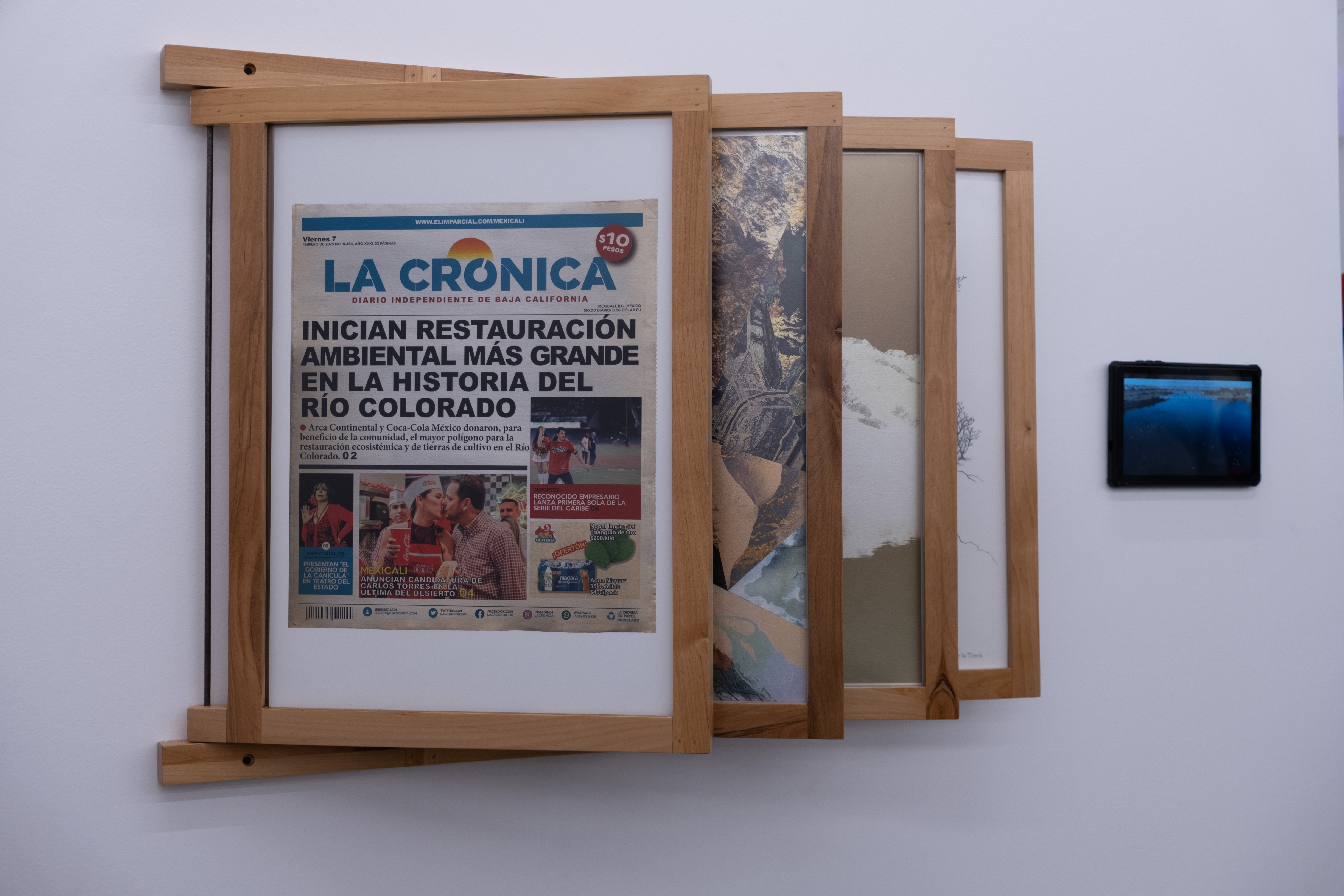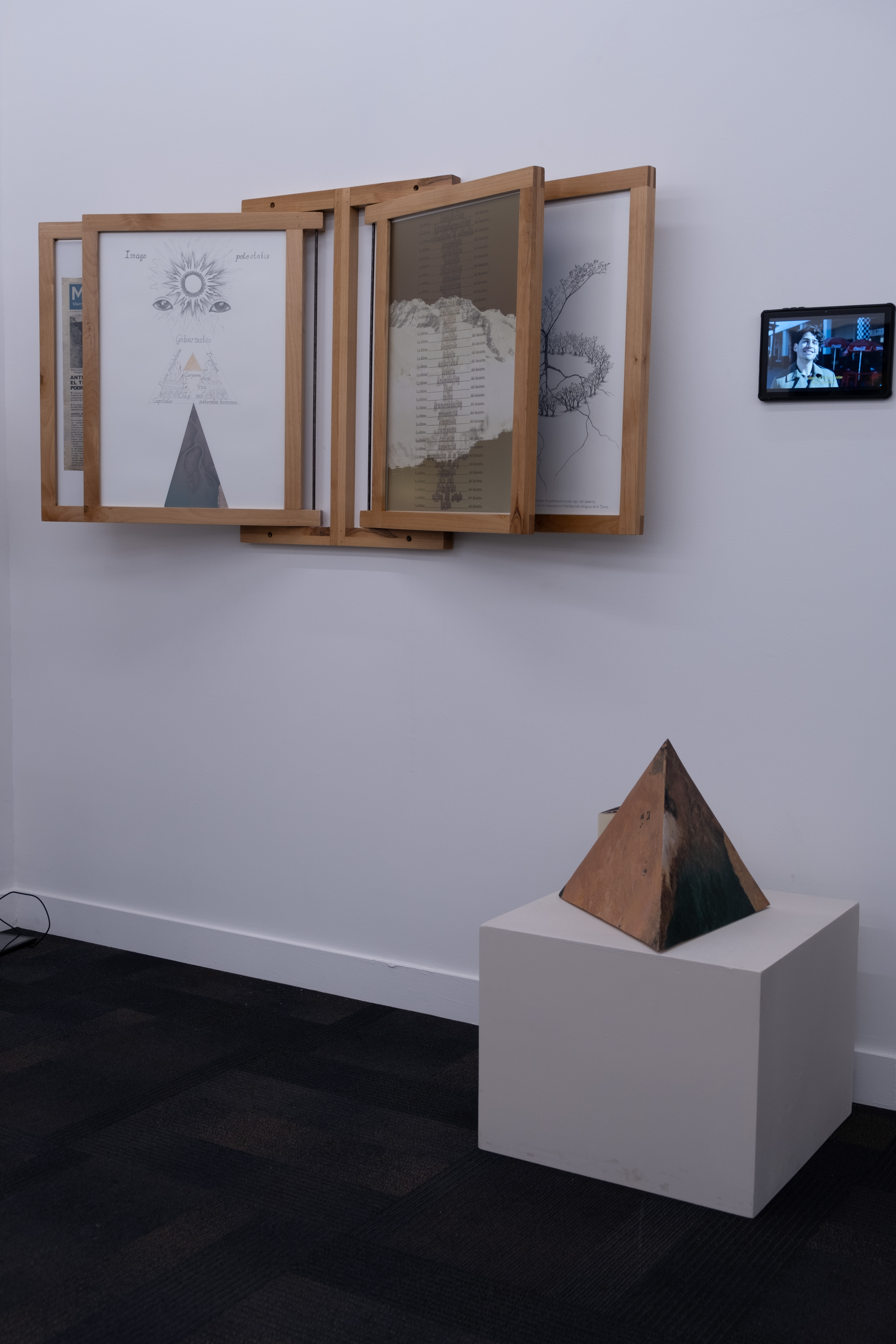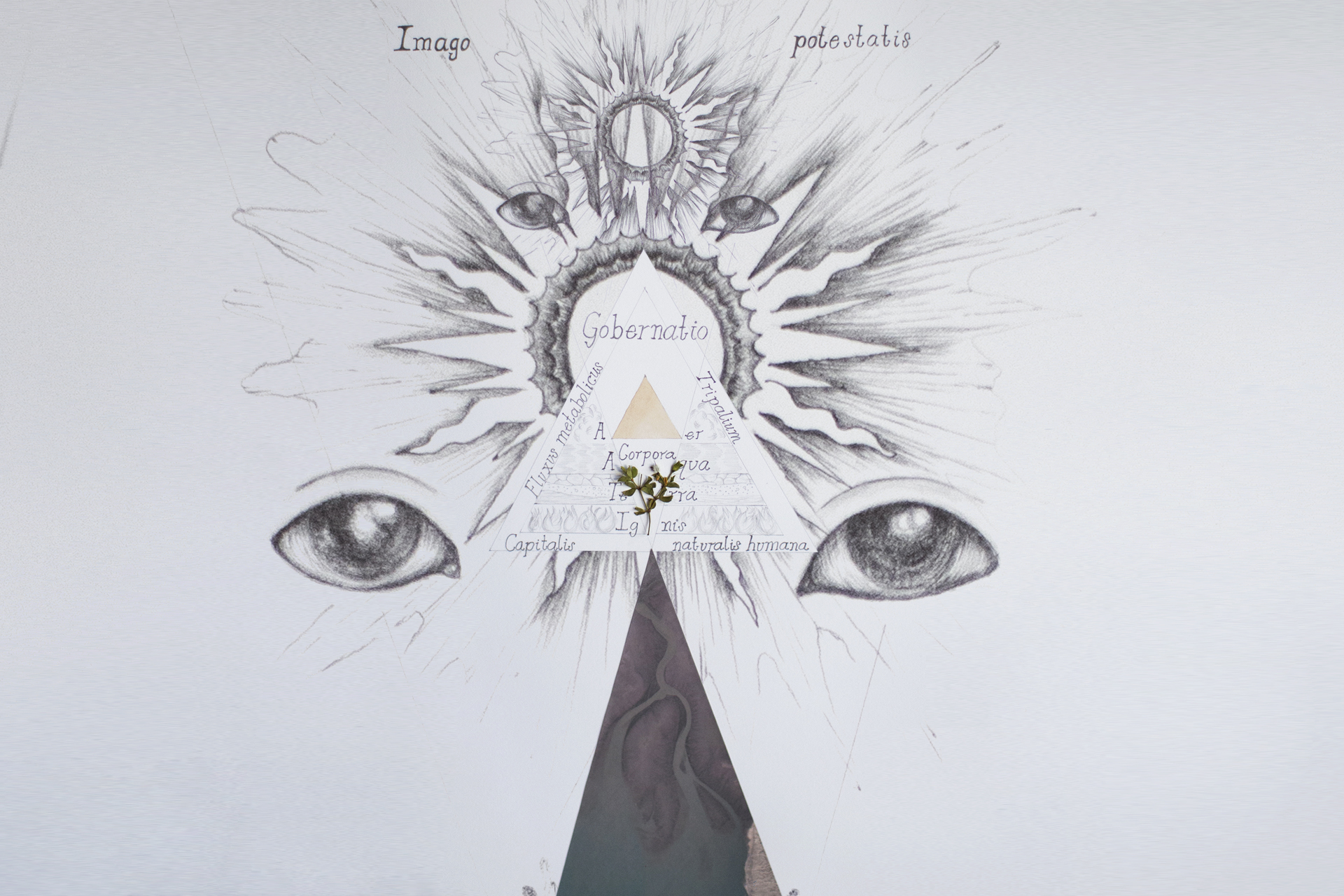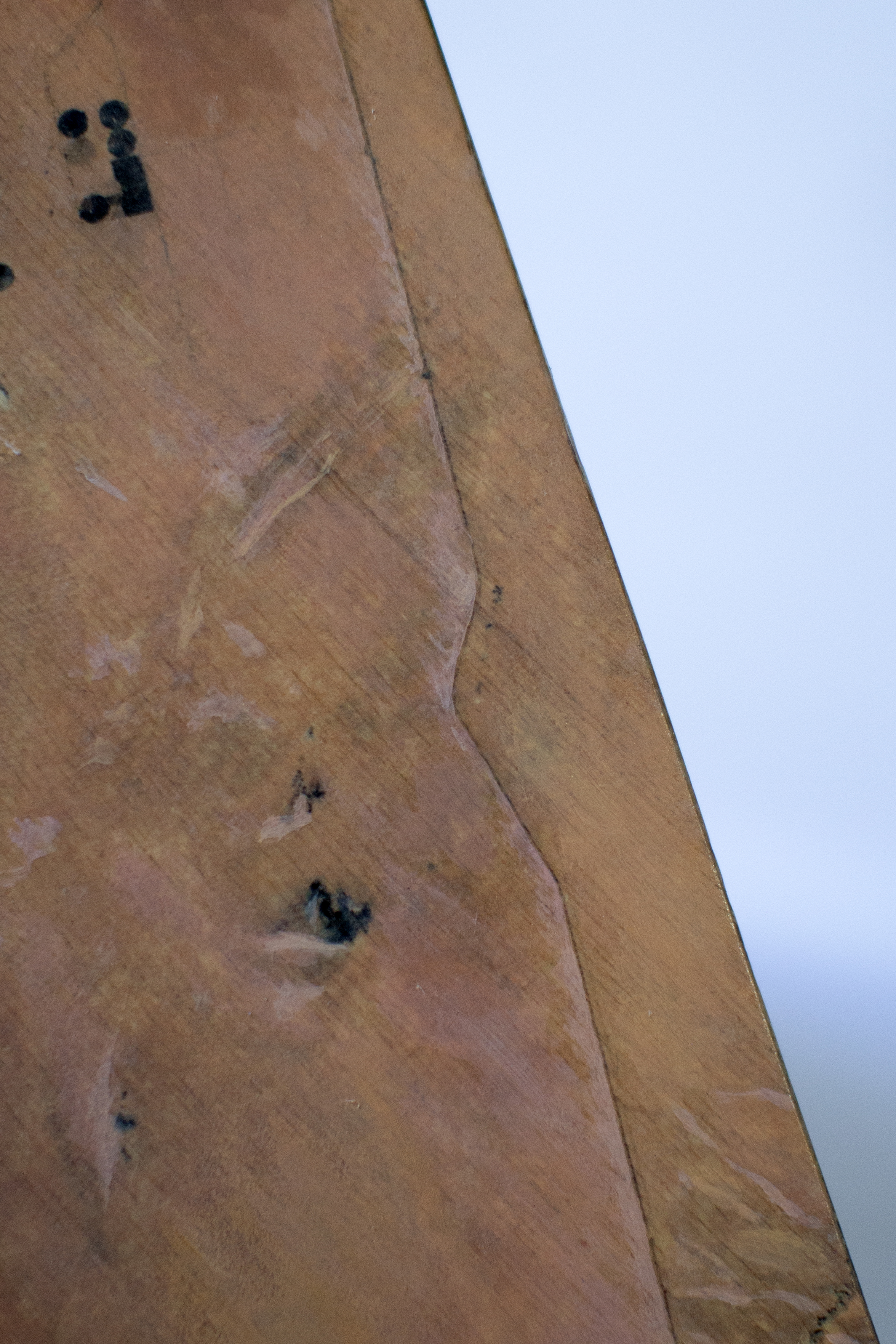Las últimas del desierto
(2025)Las últimas del desierto es un ensayo y una ficción satírica que explora el lenguaje del poder. El proyecto se despliega a través de un video, una escultura y una serie de imágenes que combinan dibujos, fotografías, apropiaciones de archivos y noticias.
Retoma la figura del Triángulo de Oro, presente en los discursos de responsabilidad social corporativa utilizados por Arca Continental y Coca-Cola, y la convierte en una metáfora central. Ensayar el lenguaje del poder, en este proyecto, consiste en retomarlo para imitar sus formas y salidas—como las primeras planas de periódico, los discursos inaugurales, los diagramas que prometen “soluciones a la población” o aquellos que pretenden explicar el mundo, como los elaborados por Robert Fludd entre el siglo XVI y XVII.
Estas formas se adueñan, se parodian, en algunos casos inspiran modos de representación, y se desdibujan mediante la figura del triángulo, un símbolo también presente en iconografías religiosas, esotéricas y estatales desde la antigüedad, como la pirámide o la Santísima Trinidad.
Vinculado a un proyecto de vida y búsqueda de largo aliento iniciado en 2020; una investigación personal, histórica, geográfica y cultural sobre el paisaje del Delta del Río Colorado; este ensayo también opera como una crítica a ciertas iniciativas magnánimas y salvacionistas de restauración ambiental que reconozco en mi entorno. Detrás de ellas se ocultan fuerzas extractivas, abarcadoras y acumulativas.
El delta (Δ) es un triángulo. Y este triángulo, situado en la frontera entre México y Estados Unidos, no es igual en todos sus lados. Podría representarse como equilátero, pero claramente tiene una base y una punta. La punta desea seguir siendo punta.
Al mismo tiempo, el triángulo se replica en el mundo material de forma orgánica e ingobernable: por ejemplo, en las raíces de las plantas más antiguas del planeta, de este desierto y de este Δ.
*La producción de esta pieza fue cofinanciada por la galería Planta Libre, Mexicali, gracias a la invitación de Minoru Kiyota para participar en el Programa Proyectos de la Feria Meterial Vol. 11.
**Para la elaboración del video colaboré con Nicolasa Ruiz en la codirección del video, con Israel Sánchez en la producción de audio y con Hugo Fermé en la cámara y dirección de foto.
***Mauricio Villa y Mayté Miranda colaboraron conmigo en la producción de la maqueta.
Las Últimas del
Desierto is an essay and a satirical fiction that explores the
language of power. The project unfolds through a video, a sculpture, and a
series of images that combine drawings, photographs, appropriated archival
materials, and news fragments.
It takes up the figure of the Golden Triangle, used by Arca Continental and Coca-Cola in their corporate social responsibility discourse, and turns it into a central metaphor. In this project, rehearsing the language of power means reclaiming it by imitating its forms and outputs—newspaper front pages, inaugural speeches, “solutions for the population” diagrams, and the cosmological charts of Robert Fludd, which sought to explain life and God in the 16th and 17th centuries.
These forms are appropriated, parodied, in some cases they inspire representational strategies, and are ultimately blurred through the figure of the triangle —a symbol also present in religious, esoteric, and state iconographies since antiquity, such as the pyramid or the Holy Trinity.
Linked to a life project and a long-term search begun in 2020—a personal, historical, geographical, and cultural inquiry into the landscape of the Colorado River Delta—this essay also operates as a critique of certain grandiose and salvationist environmental restoration initiatives I recognize in my surroundings. Behind them lie extractive, expansive, and accumulative forces.
The delta (∆) is a triangle. And this triangle, located on the Mexico–United States border, is not equal on all sides. It could be drawn as equilateral, but it clearly has a base and a tip. And the tip insists on remaining the tip.
At the same time, the triangle replicates itself in the material world in organic and ungovernable ways —for instance, in the roots of the oldest plants on the planet, in this desert, and in this ∆.
*This piece was co-financed by Planta Libre gallery, Mexicali, thanks to the invitation of Minoru Kiyota to participate in the Proyectos program at Material Art Fair Vol. 11.
**I co-directed the video with Nicolasa Ruiz. Israel Sánchez produced the jingle that acompanied the video, and Hugo Fermé did the camera direction.
***Mauricio Villa and Mayté Miranda helped me produce the pyramid.
It takes up the figure of the Golden Triangle, used by Arca Continental and Coca-Cola in their corporate social responsibility discourse, and turns it into a central metaphor. In this project, rehearsing the language of power means reclaiming it by imitating its forms and outputs—newspaper front pages, inaugural speeches, “solutions for the population” diagrams, and the cosmological charts of Robert Fludd, which sought to explain life and God in the 16th and 17th centuries.
These forms are appropriated, parodied, in some cases they inspire representational strategies, and are ultimately blurred through the figure of the triangle —a symbol also present in religious, esoteric, and state iconographies since antiquity, such as the pyramid or the Holy Trinity.
Linked to a life project and a long-term search begun in 2020—a personal, historical, geographical, and cultural inquiry into the landscape of the Colorado River Delta—this essay also operates as a critique of certain grandiose and salvationist environmental restoration initiatives I recognize in my surroundings. Behind them lie extractive, expansive, and accumulative forces.
The delta (∆) is a triangle. And this triangle, located on the Mexico–United States border, is not equal on all sides. It could be drawn as equilateral, but it clearly has a base and a tip. And the tip insists on remaining the tip.
At the same time, the triangle replicates itself in the material world in organic and ungovernable ways —for instance, in the roots of the oldest plants on the planet, in this desert, and in this ∆.
*This piece was co-financed by Planta Libre gallery, Mexicali, thanks to the invitation of Minoru Kiyota to participate in the Proyectos program at Material Art Fair Vol. 11.
**I co-directed the video with Nicolasa Ruiz. Israel Sánchez produced the jingle that acompanied the video, and Hugo Fermé did the camera direction.
***Mauricio Villa and Mayté Miranda helped me produce the pyramid.









